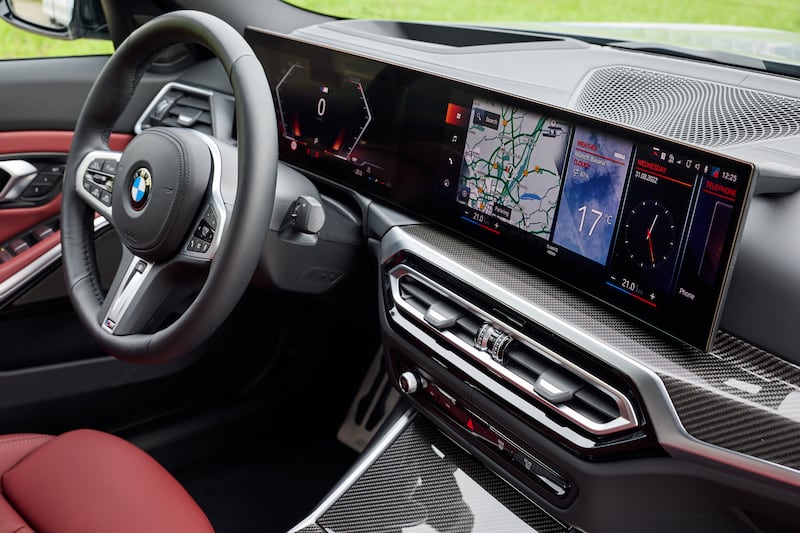There was a time when a car’s midlife model upgrade involved a tweak of the bumpers, a new set of seat covers and perhaps an extra cupholder. These days, as the car tries to mimic a motorised smartphone, midlife upgrades are mostly about the latest tech.
BMW’s latest 3 Series is a case in point. The popular premium midsized saloon and Touring estate may feature a revamped front nose and a sporty air diffuser on its rear, but the engine line-up and chassis set-up remain the same. The real difference with this latest revamped 3 Series is in the cabin.
Running on the latest BMW Operating System, the upgraded cockpit features a new fully digital display across two screens. A 12.3-inch screen faces the driver, while a 14.9-inch touchscreen next to it offers the main functionality for the car.
It’s the same set-up that has been rolled out on the German brand’s latest models, replacing the dial control knob and several banks of switches that used to sit between the driver and passenger. As such, it’s a much cleaner cabin and delivers a better user experience.
READ MORE

In the past BMW was indecisive when it came to adopting new tech controls. Take something as simple as the radio volume control. On the outgoing model you could control it from the steering wheel, via voice control, from a knob on the central console, on the touchscreen, and if you opted for gesture control by wiggling your finger in the air. By throwing every type of functionality option at the car, BMW overcomplicated what should be a simple task. When it comes to in-car tech controls, less is more.
Dumping the main control knob is a step in the right direction, but BMW still has a way to go in simplifying the user experience. The myriad of app menus on the BMW screens suggests that newcomers to the brand will need a detailed briefing on the car during handover. The days when a salesperson handed over the keys, showed you where the spare wheel was stored and waved you on your way are long over.

While there haven’t been any changes to the engine line-up, BMW is making its eight-speed Steptronic transmission standard on all 3 Series models. Also standard on the upgraded models is three-zone automatic climate control and sat-nav.
Out on the road, the 3 Series still delivers the same sharp, responsive driving dynamics that has defined the model since it arrived on the market back in 1975. Seven generations in, the rush to SUVs and crossovers may offer the greatest challenge to its sales, but time behind the wheel of this 3 Series offers a welcome reminder of just why it has retained its reputation for driving pleasure after 45 years.
Now for the bad news: prices for the upgraded 3 Series start at €52,440 for the 320i, €54,130 for the 320d and €52,550 for the plug-in hybrid 330e.














